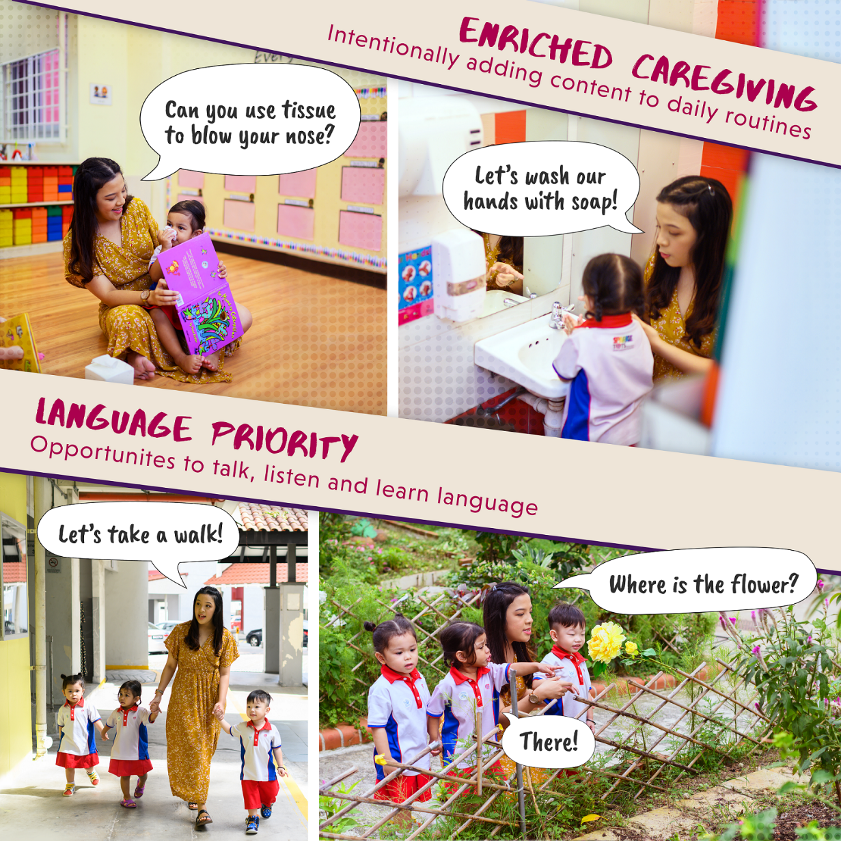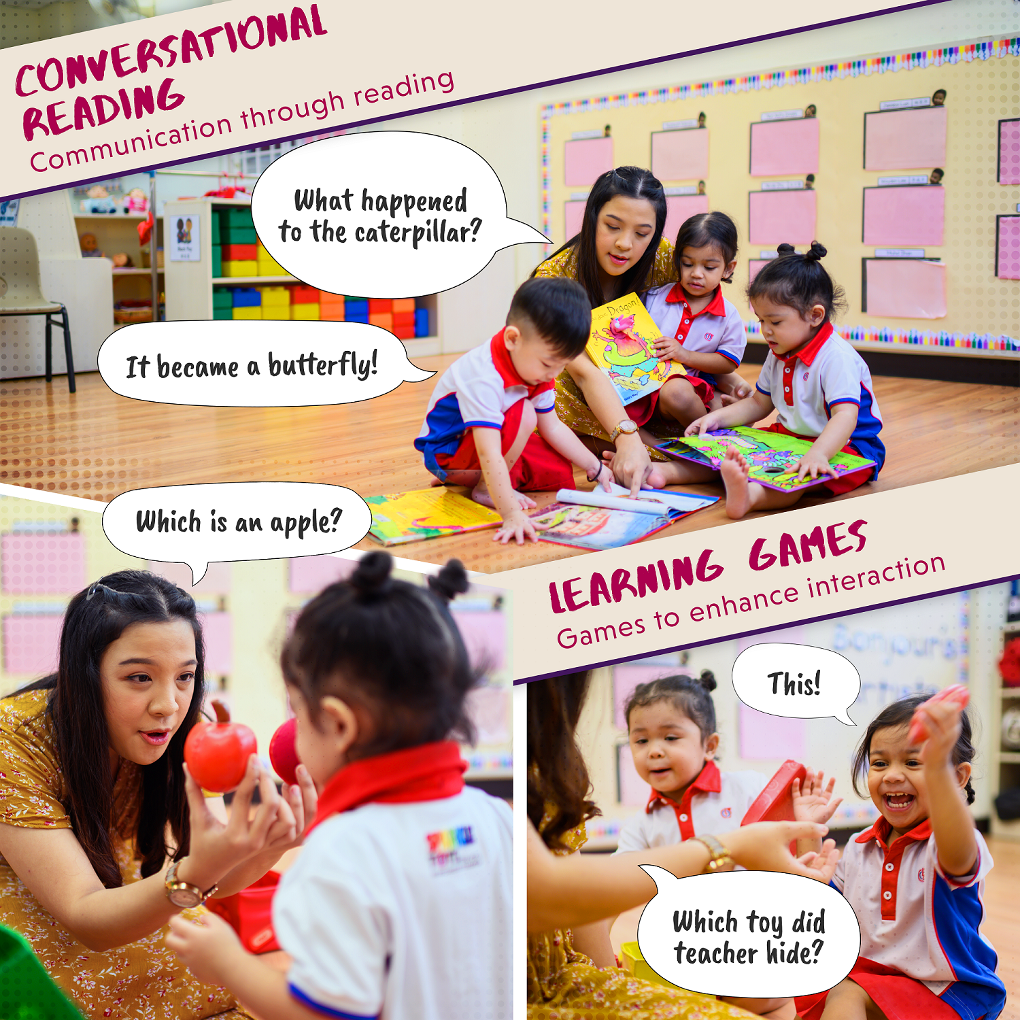As Simple as ABCD
15 Mar 2019On a sunny morning in PCF Sparkletots @ Jurong Spring Blk 553, Teacher Nur Shazwani Binte Saini (or Teacher Wani, as the children call her) is reading with her three-year old students in the nursery class.
We met this pre-school educator who is trained in the Abecedarian Approach (AA) as part of the three-year pilot ‘Temasek Foundation – ABCD (Abecedarian Based Child Development) Kids Programme’. AA provides a set of teaching and learning strategies to enhance adult-child interactions and stimulate a child’s growth and development.
Like her peers who had undergone the training, Teacher Wani supports the early development of infants and toddlers from low-income families, by building a strong foundation for the holistic development of these children in their early years.
The essence of AA is frequent and intentional interactions, either individually or in pairs. See how Teacher Wani uses the four teaching and learning elements in AA in her day-to-day interactions with the children. You can apply these strategies with your children at home too!

This is the foundational element of AA. Make every event of the day, including unplanned spontaneous ones, an occasion for learning language, so that the child will have ample practice in talking and listening.
Here, Teacher Wani creates ‘teachable moments’ for the children by saying: “Let’s take a walk” and asking: “Where is the flower?”. The children are allowed and guided to respond. Teacher Wani’s main task is to increase awareness about her use of language with children, so that language becomes intentional, not random or accidental.
TWO – Enriched Caregiving
Enriched Caregiving involves having the adult attend to multiple opportunities (Care, Connection, Content) that will enrich the quality of care and make it a learning experience for the children. For example, while carrying out the daily routines of caregiving, Teacher Wani is intentional in introducing new vocabulary: “Let’s wash your hands with soap”, “Can you use the tissue to blow your nose’, instead of just rushing through the routine. This adds an educational aspect to aid the child’s language development.
AA research studies show that there must be many educational interactions every day in order for it to have a positive effect on the child. Enriched Caregiving is a useful way for such positive, educational interactions to happen often.

THREE – Conversational Reading
Conversational Reading is different from reading a book to the child, or group reading. In Conversational Reading, there is back-and-forth interaction with the child.
The adult uses prompts (See, Show, Say) to get progressively more sophisticated responses and engagement from the child. For example, Teacher Wani asks the child: “What happened to the caterpillar?”, and the child replies: “It became a butterfly’. The child has an important and active role to play even if he is just pointing or looking. He is enjoying a fully responsive book experience.
Conversational Reading can happen at any time throughout the day.
FOUR – Learning Games
Through learning games, the child is given opportunities to contribute ideas, take turns and communicate. The adult sustains such interactive play so that the child gradually learns to think ahead, pursue a goal, and solve problems.
Here, Teacher Wani is playing the game ‘What’s Gone?’. She introduces each item to the child (for example: “This is an apple”) and hides one of the items. Then, she asks the child: “Which one is gone?” This helps the child pay attention to her surroundings, to notice and remember things that were there. Memory is used in many important mental processes, and knowing what is missing is a sign of growing memory.